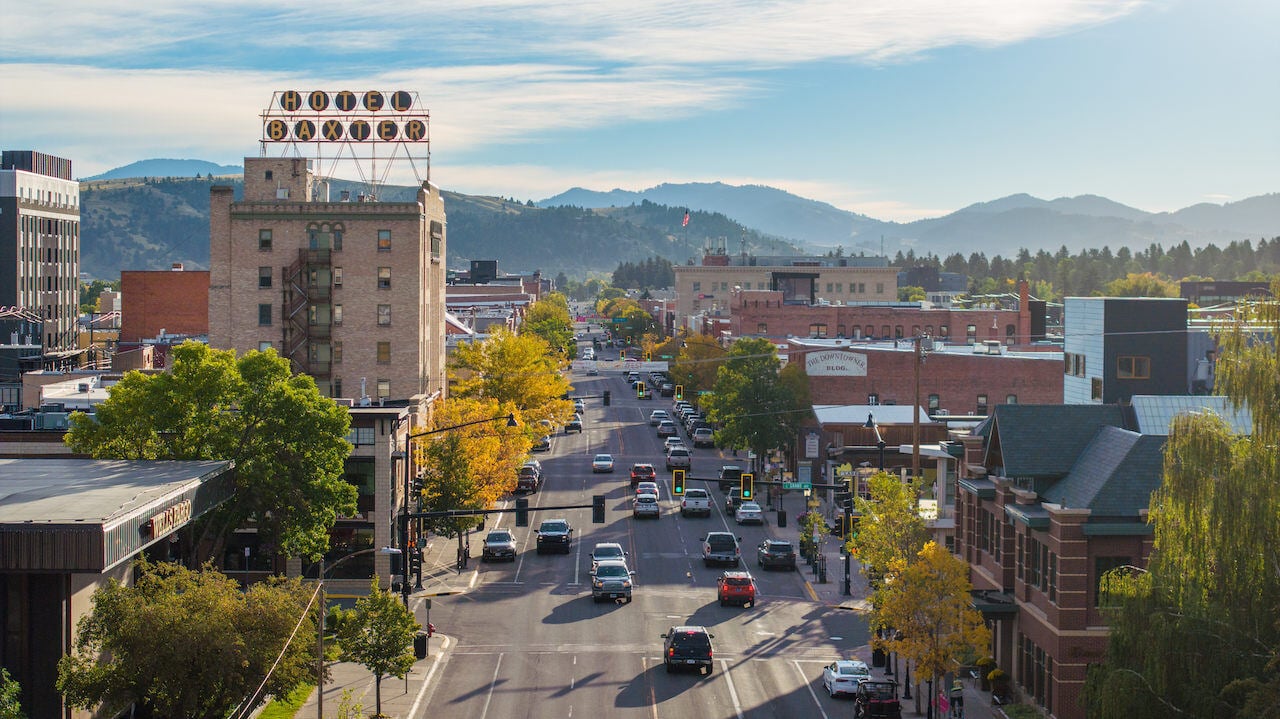Visiting Montana for the First Time: What You Need to Know
Montana's rugged beauty and outdoor adventures make it an unforgettable destination for first-time visitors. Whether you're seeking thrilling winter sports, pristine hiking trails, or charming mountain town culture, Montana offers something for everyone throughout the year.
Here’s everything you need to know when you're visiting Montana for the first time!
Planning to visit Montana? Subscribe to our blog to get travel ideas delivered to your inbox.
Travel Tips for First-Time Visitors
- Bozeman Yellowstone International Airport (BZN) offers direct flights from many major U.S. cities and is typically the busiest airport in the state. Other common airports for visitors are the Billings-Logan International Airport, the Missoula Montana Airport, and the Glacier Park International Airport.
- Rent a car to fully explore the area, as public transportation is limited.
- Weather can change rapidly — always pack layers regardless of season.
- Make accommodation reservations well in advance, especially during peak summer and ski seasons. Find places to stay in Bozeman here.
- Respect wildlife and maintain safe distances — this is bear country.
- Altitude can affect visitors — stay hydrated and take time to acclimate.
Must-Dos When Visiting Montana for the First Time
- Visit Yellowstone
- Explore historic Bozeman, MT
- Experience world-class skiing
- Soak in natural hot springs
- Stay at a guest ranch
- Hike in stunning mountain ranges
- Visit Glacier
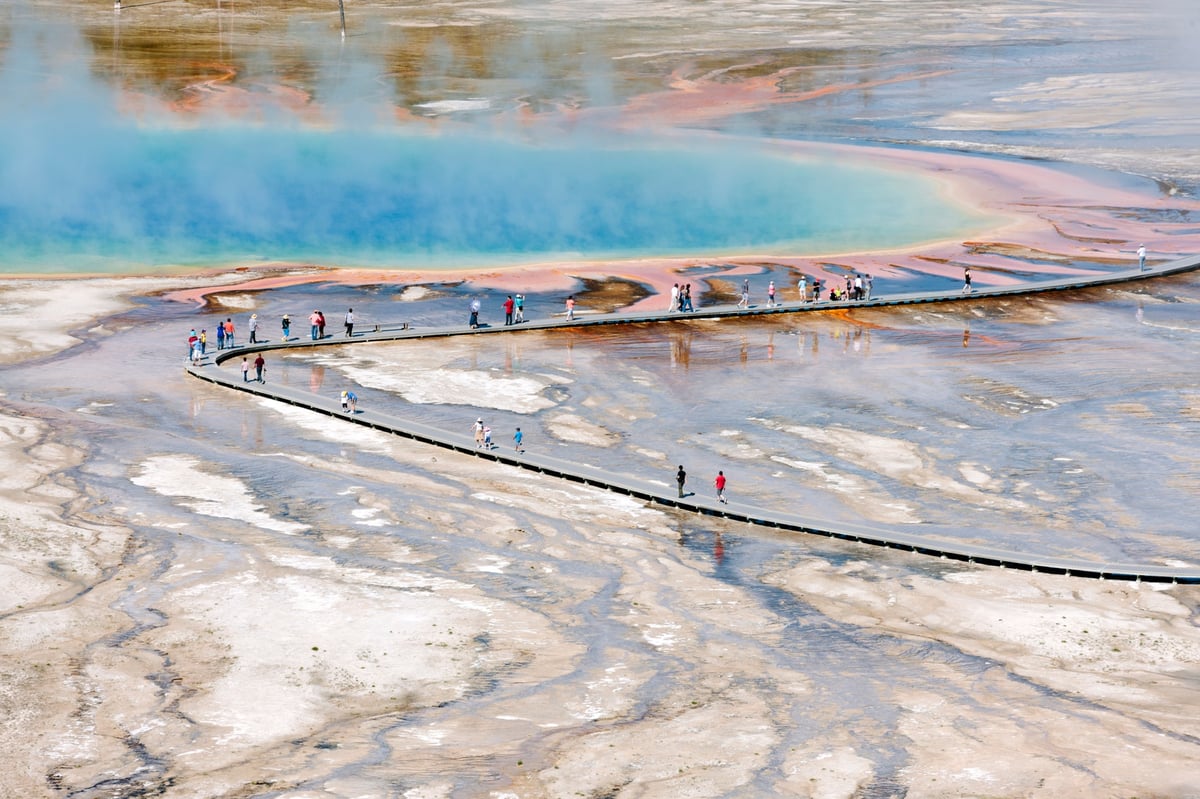
Visit Yellowstone National Park
Located just 90 minutes from Bozeman, Yellowstone National Park is a must-visit destination when visiting Montana for the first time. The Park's North Entrance provides access to famous geothermal features like the Mammoth Hot Springs as well as opportunities to spot wildlife including bison, elk, and wolves. Old Faithful and the Grand Prismatic Spring are accessible year-round through organized tours.
If you're visiting Montana in the winter, don't worry — you still experience the magic of Yellowstone. Get away from the crowds by booking a snowmobile tour, stay at the Old Faithful Snow Lodge, or try cross-country skiing on groomed trails. There's no shortage of winter activities to do in Yellowstone. Plus, you'll have more luck viewing wildlife (perhaps even a wolf!) against the white backdrop of snow.
Best time to visit: Peak season is June through August when all Park roads and facilities are open. For fewer crowds and unique wildlife viewing opportunities, consider visiting in May or September. Winter offers spectacular scenery and unique geothermal viewing experiences, though access is limited to snowmobiles and snow coaches.Weather: Summer temperatures range from 70-80°F (21-27°C), while winter temperatures often fall below 0°F (-18°C). Weather can change rapidly in any season, so pack layers and rain gear.

Exploring Historic Bozeman
A trip to Montana wouldn't be complete without a visit to Bozeman!
Bozeman's historic downtown blends Western heritage with contemporary mountain town vibes. The brick-lined Main Street features locally-owned boutiques, art galleries, museums, and farm-to-table restaurants. Don't miss the Museum of the Rockies, home to one of the largest dinosaur fossil collections in North America.
If you're looking for something a bit more "outdoorsy," Bozeman offers no shortage of adventure. Check out some of Bozeman's hiking trails, go fly fishing on the Gallatin, try your hand at ice climbing, or visit a wildlife sanctuary nearby.
Best time to visit: Bozeman is lively year-round, but summer (June-August) sees the highest tourist traffic with numerous outdoor festivals and events. For a more laid-back experience, visit during shoulder seasons (April-May or September-October) when temperatures are mild and crowds are thinner.
Weather: Summer temperatures average 70-85°F (21-29°C), while winter temperatures typically range from 15-35°F (-9 to 2°C). Spring and fall are variable, with temperatures between 45-65°F (7-18°C).
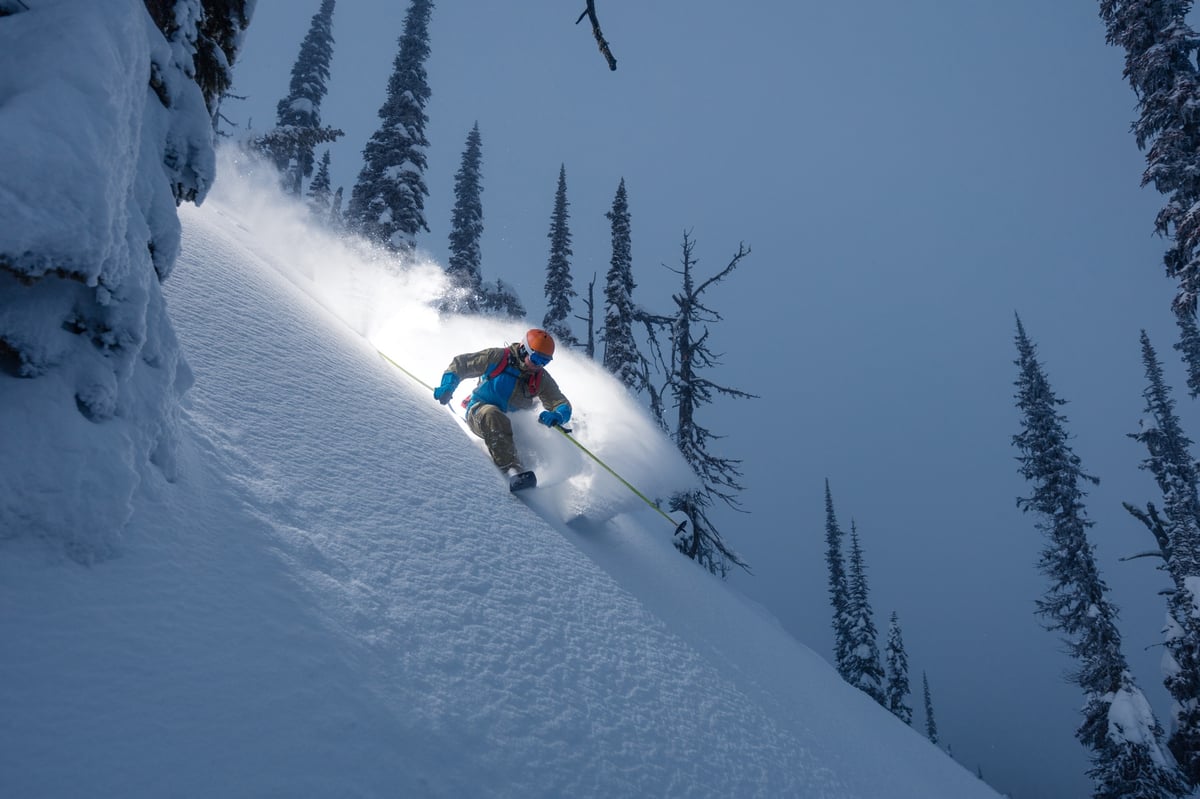
World-Class Skiing
Just 16 miles from Bozeman, Bridger Bowl Ski Area offers 2,000 acres of terrain for all skill levels, with a reputation for light, dry powder snow. Bridger Bowl is known for its premier skiing and snowboarding, family-friendly atmosphere, and Raptor Festival that takes place early October.
If you're looking for a challenge, you can find techincal runs at Big Sky Resort, located about an hour south of Bozeman, which boasts the largest skiing complex in North America. Big Sky's remote location and massive acreage keep crowd sizes reasonable, and its legendary Big Couloir is one of the most challenging in-bounds runs in North America.
Best time to visit: The Montana ski season typically runs from early December through early April, with peak tourism during holiday weeks and spring break (mid-March). January and February offer the best powder conditions but also the coldest temperatures.
Weather: Winter temperatures at higher elevations can drop below 0°F (-18°C), especially in December and January. Pack appropriate layers and high-quality winter gear.
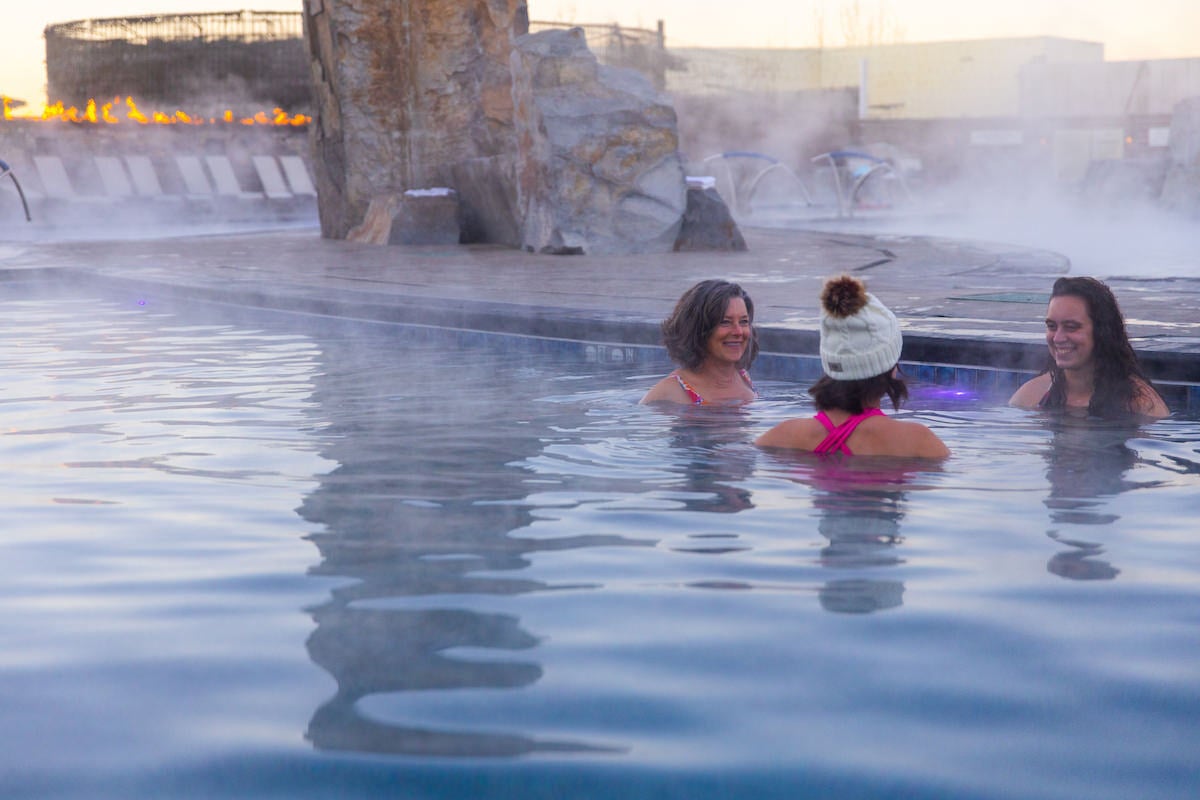
Relaxing in Soothing Hot Springs
Summer or winter, it’s never the wrong temperature for a nice soak. Montana's geothermal activity provides numerous natural hot springs perfect for relaxation. Bozeman Hot Springs offers 12 pools of varying temperatures, with live music through the winter season. For a more rustic experience, Norris Hot Springs combines soaking with live music and locally sourced food.
Best time to visit: Montana's hot springs are enjoyable year-round, but they're particularly magical during winter months when steam rises into the cold air. Weekday mornings tend to be the least crowded.
Weather: Indoor changing facilities make hot springs accessible regardless of weather conditions. Winter visits require warm clothing before and after soaking.

Experiencing Authentic Montana at a Guest Ranch
For those seeking an immersive experience, staying at a Montana guest ranch (also known as a dude ranch) offers a perfect blend of Western hospitality, outdoor adventure, and cowboy culture. These all-inclusive experiences typically combine horseback riding, fly fishing, hiking, and authentic ranch activities with comfortable lodging and home-cooked meals.
Near Bozeman, several renowned ranches welcome visitors:
- 320 Guest Ranch: Located in Big Sky, this historic property offers horseback riding along the Gallatin River, fly fishing, and winter sleigh rides. Their riverside cabins provide a perfect balance of rustic charm and modern comfort.
- Nine Quarter Circle Ranch: Situated in Gallatin Gateway, this family-operated ranch specializes in horseback riding programs for all skill levels with access to pristine wilderness areas.
- Mountain Sky Guest Ranch: In Paradise Valley, this luxury ranch combines exceptional horseback riding with gourmet dining and spa services.
Best time to visit: The prime guest ranch season runs from June through September, with July and August being peak months. Some ranches also offer special spring cattle drives in May or fall colors rides in September. Winter visits (December-March) at year-round ranches provide unique experiences like sleigh rides and cross-country skiing, with smaller crowds and lower rates.
Weather: Summer days typically range from 75-85°F (24-29°C), dropping to 45-55°F (7-13°C) at night. Spring and fall see daytime temperatures between 55-70°F (13-21°C) with chilly mornings and evenings. Mountain locations can experience afternoon thunderstorms in summer months, while winter temperatures often drop below freezing.

Hiking in the Bridger and Gallatin Ranges
When you're visiting Montana for the first time, it's unlikely that you'll make it out without hiking. The Bozeman area offers countless hiking opportunities for all skill levels. Popular trails include:
- The "M" Trail: A steep but rewarding 1.7-mile round trip hike offering panoramic views of the Gallatin Valley
- Hyalite Canyon: Over 30 miles of trails featuring waterfalls, alpine lakes, and dense forests
- Drinking Horse Mountain Trail: A moderate 2.4-mile loop with stunning valley views
Best time to hike: Bozeman hiking season typically runs from late May through October, with July and August being peak months. Wildflowers are most abundant in June and early July.
Weather: Summer hiking temperatures range from 60-85°F (16-29°C). Afternoon thunderstorms are common in summer months, so start hikes early. Shoulder season hikers should be prepared for variable conditions.
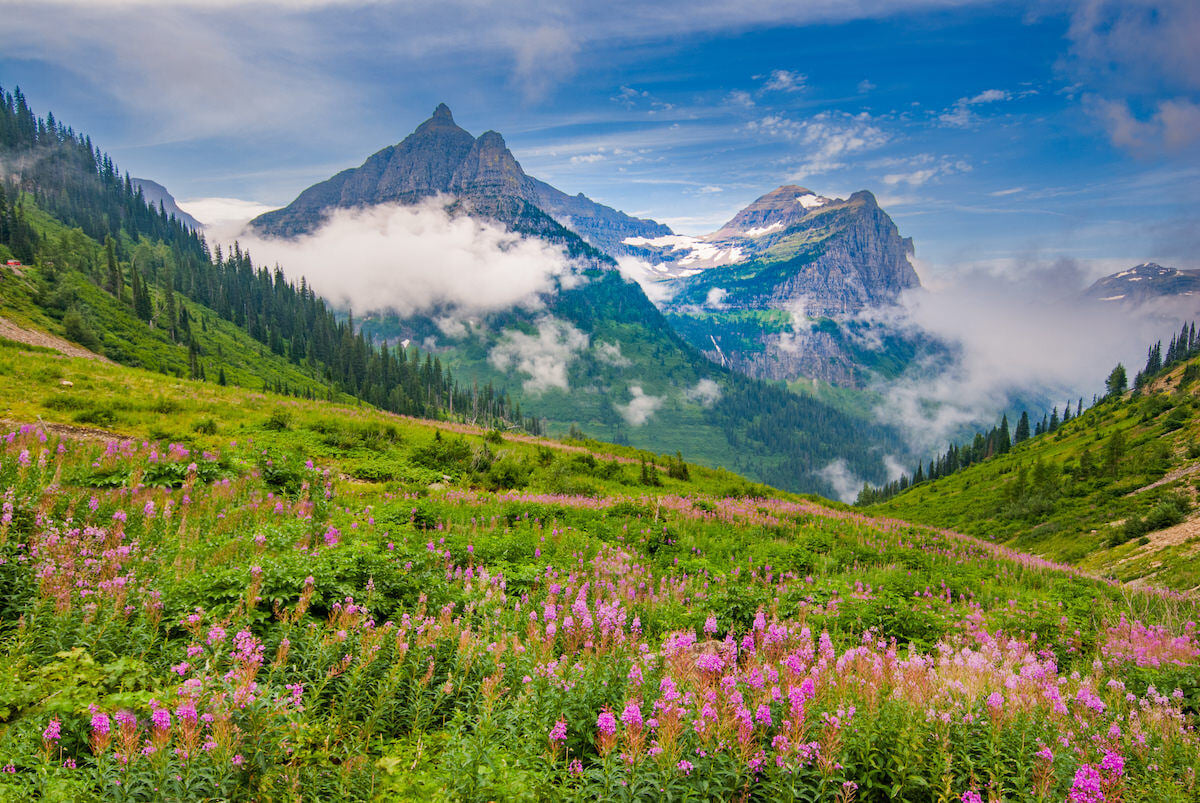
Adventuring in Glacier National Park
No first visit to Montana is complete without experiencing Glacier National Park's dramatic peaks, pristine lakes, and ancient glaciers. A 6-hour road trip from Yellowstone, this spectacular park offers some of North America's most stunning mountain scenery and wildlife viewing opportunities.
The crown jewel is the Going-to-the-Sun Road, a 50-mile engineering marvel that winds through the Park's heart, crossing the Continental Divide at Logan Pass and providing breathtaking mountain vistas. At Lake McDonald, visitors can marvel at the Park's largest lake, known for its crystal-clear waters and shoreline decorated with colorful stones.
Best time to visit: The optimal time to experience Glacier National Park is during the peak season from late June through mid-September. July and August offer the warmest temperatures and best hiking conditions but also draw the largest crowds. For a quieter experience, visit in mid-June when wildflowers begin blooming, or September when fall colors emerge and wildlife becomes more active.
Weather: Glacier's weather can be unpredictable and varies dramatically by elevation. Summer temperatures at lower elevations typically range from 60-80°F (15-27°C) during the day, dropping to 40-50°F (4-10°C) at night. Mountain passes can be 10-15 degrees cooler. Spring and fall see highly variable conditions, with temperatures ranging from below freezing to 60°F (15°C), and snow possible at any time.
Visiting Montana for the First Time? You Won't Get Bored.
Montana's natural beauty, outdoor recreation opportunities, and welcoming culture make it an ideal destination for adventure seekers and nature lovers alike. Whether you're visiting in the height of summer or the depths of winter, Bozeman and its surrounding areas offer endless possibilities for creating unforgettable memories during your first visit to Big Sky Country.
The perfect trip to Montana depends on your mood, your interests, your budget, and who you’re traveling with, but we hope this guide gives you a good place to start. For even more helpful info about visiting Montana for the first time, download our travel guide below.
In our never-ending quest to keep up with all things new in Bozeman, we have been producing content for years and can't possibly update every blog when new businesses open or existing businesses close. Please reference the publish date and do your own due diligence when making plans.
